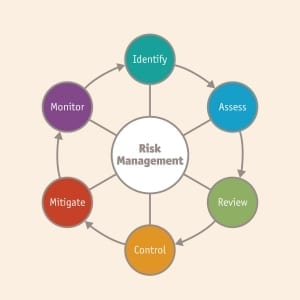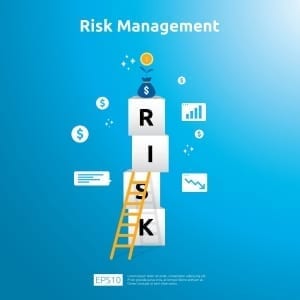8 Leading Areas for Change In Risk Management/Analysis In The Coming Years

However, markets and industries are dynamic concepts. To answer the latest challenges, risk analysis has to be active as well.
More Precise Risk Models
Predominantly relying on the human workforce makes risk models way too complicated. Risk management cannot be efficiently applied to risk models that have too many factors to account for. It’s one of the most significant areas for change in risk analysis in the coming years.
To assess the risk, companies will be advised to simplify the risk models and thus help themselves. With simpler risk models assessing risks and delivering relevant strategies to mitigate them will become significantly more comfortable than today.
Some of the strategies we will see are process automation and streamlined communication, both internally and externally.
Digitization
Risk management, as we know, it will definitely change in the coming years. Scanning is an ongoing process most businesses are exposed to. Some of them directly, others indirectly. Anyhow, the digitization itself offers away too many benefits for companies to leave it behind because it brings new risks.
The digital era has also brought to light new business models facing brand new risks, which makes digitization a leading area for change in risk analysis. People in the risk management industry will have to identify these emerging and evolving risk types and integrate them into the existing risk models.
Interconnectedness and Collective Risk Management
Businesses across the world have become an integral part of the networked economy. Interconnectedness comes with a great many benefits – quickly penetrating new markets and growing customer base, being just a few of them. Meanwhile, supply chains have become more complex.
Businesses actively engage on different levels with different external stakeholders. All of this, at the same time, creates a network of risks. Market risk analysis slowly shifts toward a joint effort.
All businesses in this network will have to rely on their partners that they can identify, manage, and reduce risks. It will definitely change risk management in the days to come.
The digitization and interconnectedness allow for new risks that some organizations don’t have experience with. All this calls for a pervasive approach to risk management.
Being able to assess and minimize the risks in-house and outside will become a leading practice in many industries. It will push risk analysis toward the use of technology and software solutions.
How will the risk assessment field answer to these new challenges? One of the possible answers is pursuing opportunities to monitor and manage risk in real-time. The technology is already here. There are different types of sensors and tracking and monitoring solutions that can help streamline manage risks and mitigate it before there is a need for damage control.
Risk Transfer Instruments
The most common risk transfer instruments are contracts and insurance. They are widely used across verticals to cushion the blow of unforeseen circumstances and allow businesses to continue their operations. Two main factors driving change in risk analysis are financial institutions and risk events with potentially the most significant impact on business.
The financial industry is always working on coming up with new financial instruments to help businesses monetize and transfer risk. It will be a great challenge to assess whether or not to invest in these instruments.
On the other hand, risk events that could potentially have a high impact on operations are imminent. The climate change, cyberattacks, and the global pandemic are just a couple of them.
Markets are becoming saturated and more volatile as we speak. The competition is harsh out there, and that creates a frame of reference in which businesses can do little without intentionally taking risks. At the same time, deliberately taking risks drives change in risk analysis.
Finding new ways to accurately identify, assess, and measure risks are becoming more important as we speak. Organizations will turn to calculate the accurate upside value for a chance to be able to decide whether it is feasible to continue operations while taking risks intentionally.
Enabling sustainable risk-taking is potentially the area that’s going to change the risk analysis the most. Managing risk will start drifting away from only identifying the risks that have to be avoided towards taking risks to drive value, performance, and productivity.
AI To Help Human-led Risk Management
AI, machine learning, and big data are driving changes across verticals. Risk analysis is not an exception. The formulas, knowledge, and experience risk managers leverage to stay on top of managing risks are simply not enough. The landscape has become way too dynamic to identify and assess all the risks.
The technologies mentioned above will help businesses extend their market risk analysis practices and make them error-free. Smart tools can detect, predict, and prevent risks the very moment they become a real threat. The best thing about it is that these are fully autonomous systems capable of self-managing risks entirely on their own.
Risk Insights and Behavioral Science
The human factor is a crucial piece for solving the risk puzzle. Risky behavior is the subject of many new studies in the fields of social, psychology, neuroscience, and cognitive sciences. The findings can’t be ignored. Thanks to the systematic approach, the studies have identified the factors and personality traits correlated with risky behavior.
The results of these studies are already changing the risk analysis landscape. We can already see some organizations having a Chief Behavioral Officer on the payroll. At this point, it’s safe to assume that the results of these studies are going to drive at least some new changes in risk management practices.
To answer the new threats, risk management will have to move closer to a model based on proactive, real-time, and technology-powered practices. These eight areas have the most impact on market risk analysis and risk management, in general, and will most definitely change it in the coming years.
About the Author















Leave a Reply
Want to join the discussion?Feel free to contribute!